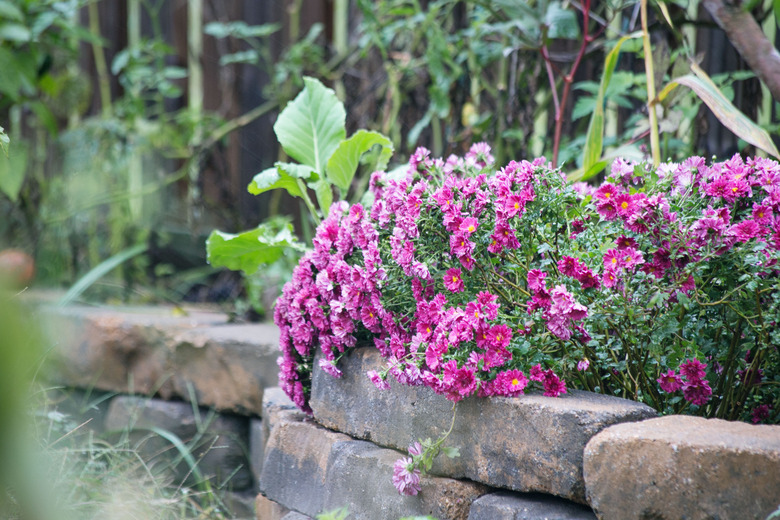How To Care For Mums
We may receive a commission on purchases made from links.
Proper care for mums (Chrysanthemum x morifolium) allows these popular blooms to decorate your flower garden or front steps beautifully. Including many species, chrysanthemums, or mums, give you plenty of choices for color, sizes and growth habits. You can choose from 3- to 4-foot tall selections to those that grow only 1 foot tall and from single, 2-inch flowers to double-form flowers. Mums are usually an easy-care plant, but with attention to care, you can maximize their growth and their hardiness.
Care for Mums: Location
Care for Mums: Location
Mum hybrids appear in nurseries and grocery stores year-round, but they typically bloom in your yard in late spring or early fall and are generally hardy in U.S. Department of Agriculture plant hardiness zones 5 through 9, depending on type. Mums prefer full sun but will also do well with partial shade. They do best in slightly acidic, rich and well-drained soil.
Water When Needed
Water When Needed
Newly planted mums do best when you water them two to three times each week. Established, hardy mums planted in the landscape generally need around 1 inch of water weekly. If the rain doesn't provide enough moisture, supplement without overwatering. Potted mums, especially indoor mums, need more water since the containers hold limited moisture. Water your potted mums every other day. Many mums are sold with foil pot covers, but it's best to remove these to allow plants to drain freely.
Fertilizing Your Mums
Fertilizing Your Mums
For the best blooms and healthiest plants, fertilize your mums with a 15-15-15 multipurpose fertilizer blend, using about 1 pound for each 100 square feet of garden space. Fertilize your plant about every 10 days, or according to product-specific label instructions, from spring until the buds begin to show some color. Sprinkle the fertilizer lightly around each plant and work it into the soil slightly. Water the plant well to help the fertilizer reach the mum's roots.
Taking Special Care
Taking Special Care
Mums produce bigger flowers and more sturdy stalks if you pinch the tips of each stem back throughout the growing season during the spring and summer. Stop pinching once you see buds begin to color, generally in midsummer. Pinching prevents the plant from becoming leggy, with skinny stalks that tend to fall over. Plant potted mums in your garden at any time, where they'll revert over time to a fall blooming schedule. Divide existing garden plants in early spring as new growth begins or after the plant finishes blooming in the fall.
Mum Trouble Spots
Mum Trouble Spots
When growing mums, you have a few pest issues to handle. Aphids appear in all USDA zones. You can remove them with a strong spray of water instead of using insecticidal soap, which can damage chrysanthemums. In hot climates, mums may be attacked by boring insects that are the larvae of beetles or moths. Preventive measures work best for borers. Clear weeds from underneath your mum and remove leaves and stems infested with larvae.
If prevention doesn't work, apply the pesticide Bt or Bacillus thuringiensis with a garden sprayer to cover the leaves and stems of the mum. Mix and apply according to label recommendations. Wear gloves and eye protection, and follow all label safety precautions when applying.
